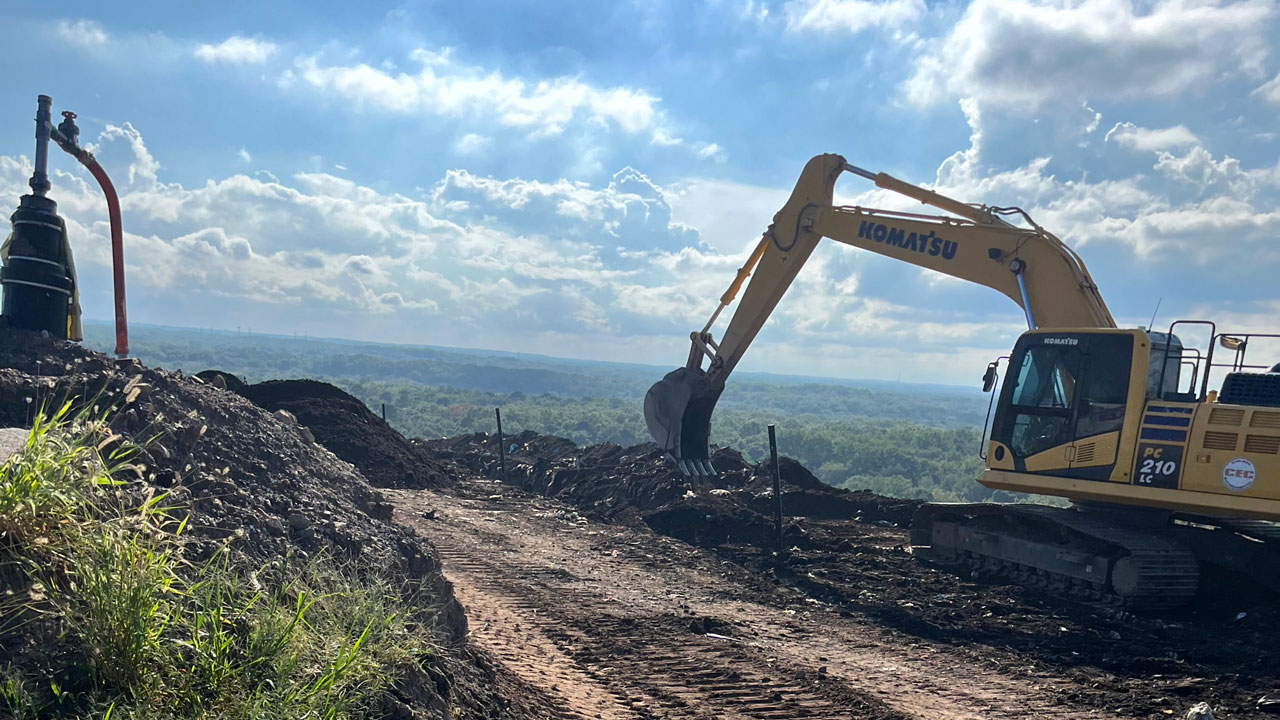
Tetra Tech’s Justin Boswell highlights key health and safety risks of landfill gas (LFG) operations and shares proven strategies to prevent worker injury and exposure, as well as environmental impacts.
LFG systems play a critical role in emissions control and environmental compliance, but they also introduce complex safety considerations for field crews and engineers. This article draws from firsthand project experience to explore the hidden risks of LFG work—such as subsurface fires, trench collapses, and exposure to toxic gases—and outlines how thoughtful planning, worker training, and field protocols help prevent accidents and protect system performance.
Information from this industry insight was originally published in Waste Advantage Magazine.
Understanding LFG Hazards
LFG is a byproduct of decomposing waste that releases methane, carbon dioxide, and trace gases like hydrogen sulfide over time of decomposure.
LFG can pose serious health and safety risks, including, but not limited to, explosive conditions, harmful gas exposure, and subsurface fires.
Engineering Controls to Prevent Accidents
Engineering design and controls, among various other methods, play a pivotal role in preventing accidents on-site. Engineering solutions such as guardrails and caution tape around boreholes, safe trench slope and depth, and clearly documented operating procedures can help limit exposure and reduce risk. Trench depth should be minimized when possible, and boreholes must be properly secured with grates and barricades. CAD software can help confirm appropriate slope designs to avoid unnecessarily deep excavations, reducing the need for shoring or additional protective measures.
Field Protocols and Daily Safety Measures
The importance of daily safety meetings, use of personal protective equipment, and spotters to protect workers during active operations are of great importance. Equipment such as personal gas detectors help monitor for harmful gasses, such as hydrogen sulfide, and measure oxygen deficiencies and dangers that may not be seen with the naked eye. Routine operations like well tuning and LFG monitoring are essential not only for environmental compliance, but also for identifying early signs of subsurface fires or gas leaks.
Case Example: Borehole Cave-In
During a recent landfill gas project, Tetra Tech field staff encountered a borehole cave-in while drilling a gas extraction well. The team halted work immediately, assessed the conditions, and modified procedures to prevent equipment damage and protect personnel. Situations like this highlight the value of construction quality assurance (CQA) oversight and the ability to adapt quickly when unexpected conditions arise in the field.
A Commitment to Safer Design and Operations
It is important to integrate health and safety considerations at every project phase, from engineering design through daily field operations. Clients and contractors should embed safety protocols in their contract documents, standard operating procedures, and health and safety plans. The goal is clear: mitigate health risks, protect infrastructure, and ensure every worker returns home safe.
About the author
Justin Boswell
Justin Boswell is a project engineer specializing in LFG design, CQA, emissions monitoring, and environmental permitting.
He supports solid waste clients across the U.S. with a focus on health and safety integration in LFG operations, including gas collection and control systems, renewable natural gas infrastructure, and site-specific risk mitigation strategies.